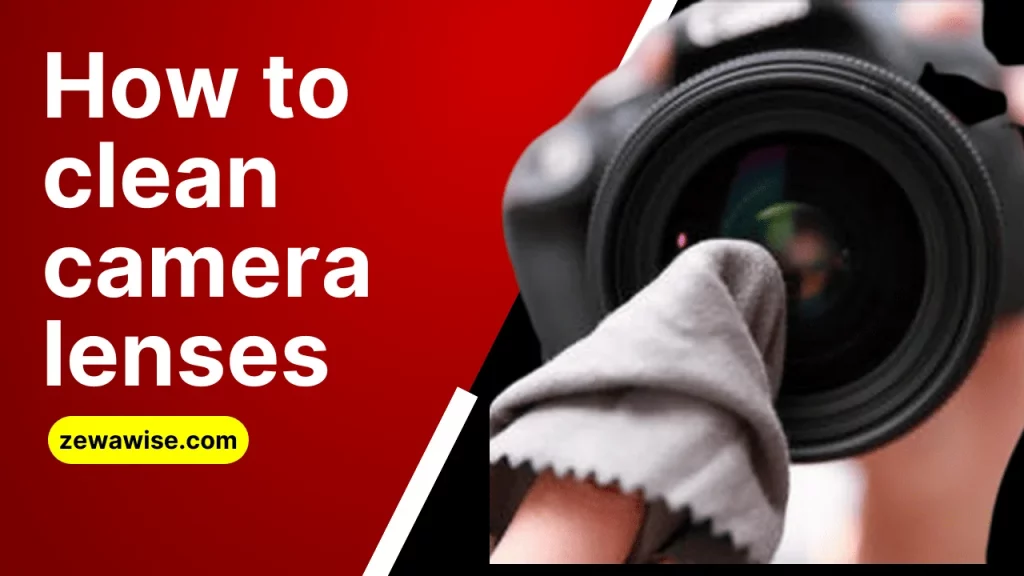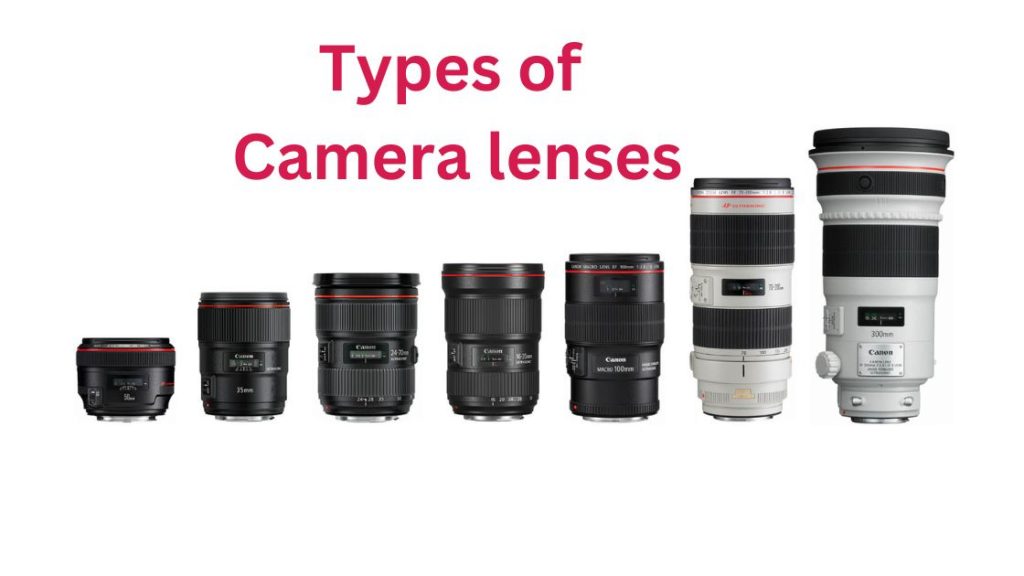The first step in cleaning a dirty camera lens is to remove any loose dirt or debris. This can be done by gently blowing on the lens or using a soft brush designed for camera lenses. Avoid scratching the lens with your fingernails or harsh brushes, as this can cause permanent damage.
Next, use a microfiber lens cleaner to wipe the lens in a circular motion gently. These cloths are specially designed to attract and remove smudges, fingerprints, and other oily substances without leaving scratches behind. It’s essential never to use regular tissues or paper towels, as these can easily scratch the delicate surface of the lens.
How to clean camera lenses?
Remove Dust and Dirt
The first step in cleaning a lens is to remove dust and dirt from the surface. Before applying any lens cleaning fluid or wiping the glass clean, ensure no loose particles can scratch your lens.
- Use a blower to remove dust: Handheld air blowers are essential for brushing away dust without touching the lens. Avoid using canned air, as it can leave a residue.
- Use a soft-bristle lens brush to sweep away dirt and dust gently.
Prepare a Cleaning Solution
You will need a proper lens-cleaning solution to clean your camera lens effectively. Avoid using household cleaning liquids as they might damage the lens coating.
- Buy a reputable lens cleaning fluid from a camera store, or you can create a solution using a few drops of lens cleaning fluid or isopropyl alcohol.
Apply the Cleaning Solution
- Dampen a lens cleaning tissue or a microfiber lens cloth with the cleaning fluid. Never pour or drop the cleaning liquid directly onto the lens, as it might seep inside your camera.
Gently Clean the Lens
- Clean the lens surface in a circular motion, starting from the center and moving outward.
- Use a soft, clean microfiber cloth or lens-cleaning tissues to avoid scratching the front lens element.
- Avoid applying excessive pressure, which could scratch your lens or damage the lens coating.
Remove Stubborn Smudges
A simple cleaning spray or lens cleaning wipes may be necessary for oily or sticky smudges.
- Apply a few drops of lens cleaning fluid to a lens cloth or tissue.
- Gently wipe the smudge from the lens surface.
Dry the Lens
- After cleaning, use a microfiber cloth or a dry lens cleaning tissue to remove any remaining cleaning fluid.
- Always keep a spare one in your camera bag.
Check for Streaks or Smudges
- Inspect the lens in good light to ensure the lens is clean and free from streaks or smudges.
- If streaks are present, lightly buff the surface with a clean microfiber cloth until the glass is clean.
Common Mistakes to Avoid When Cleaning Camera Lenses
When cleaning camera lenses, it is essential to be gentle and meticulous to avoid damaging the delicate lens elements and coatings. Here are some common mistakes to avoid when cleaning camera lenses, along with tips on how to clean your camera lens the right way:
Using the Wrong Cleaning Tools or Solutions
- Avoid using regular household cleaning products, paper towels, or abrasive cloths.
- Use a microfiber lens cloth, lens cleaning fluid specifically designed for camera lenses and a soft-bristled lens brush.
Applying Cleaning Solution Directly Onto the Lens
- Dripping cleaning fluid directly onto the lens can cause it to seep into the lens and camera, potentially causing damage.
- Instead, apply a few drops of lens cleaning fluid to a microfiber cleaning cloth or lens tissue and then use it to clean the lens.
Exerting Excessive Pressure on the Lens
- Pressing too hard while cleaning can scratch or damage the lens coating.
- Gently wipe the lens with a soft, clean microfiber cloth in a circular motion from the center outward.
Cleaning the Lens Too Often
- Even when done gently, excessive cleaning can wear down the lens coating over time.
- Only clean your camera lens when you notice visible dirt, dust, or smudges affecting image quality.
Using a Blower Incorrectly
- Blowing air with the nozzle touching the lens element might introduce contaminants or scratch the lens.
- Use a blower to remove dust by holding it at a safe distance from the lens and releasing air in controlled bursts.
Using Canned Air
- Canned air can introduce chemicals onto the lens surface and is generally too forceful.
- Use a manual air blower instead of canned air to blow away dust and dirt gently.
Neglecting the Lens Cap and Rear Lens Element
- Not replacing the front and rear lens caps can expose the lens to unnecessary dust and dirt.
- Always replace the lens caps when the lens is not in use.
Forgetting to Clean the Lens Barrel and Camera Body
- Dirt on the lens barrel or camera body can migrate to the lens or inside the camera.
- Use a cleaning brush or microfiber cloth to clean the lens barrel and camera body gently.
Not Checking the Lens After Cleaning
- Assuming the lens is clean after a quick wipe can lead to missed spots or streaks.
- After cleaning, inspect the lens in good light. Look for streaks, smudges, or any dust that may remain.
Ignoring Manufacturer’s Instructions
- Not following the lens manufacturer’s cleaning recommendations can result in damage.
- Always check your lens manual or the manufacturer’s website for specific cleaning instructions.
Storing Cleaning Supplies Improperly
- Leaving your lens cleaning kit loose in your camera bag can cause cross-contamination.
- Store your microfiber cloths, lens tissues, and cleaning fluids in separate, sealed bags or compartments.
Using a Dirty Cleaning Cloth
- A dirty microfiber cloth can scratch your lens or reintroduce oil and dirt.
- Ensure your microfiber cloth is clean before using it on your lens. Wash it regularly with a gentle soap (avoiding fabric softeners) and let it air dry.
By avoiding these common mistakes, you can help ensure your camera lenses remain in excellent condition for years. Remember, gentle and infrequent cleaning with the proper tools is the best way to maintain your camera lenses.
Additional Tips
- Always replace the front and rear lens caps when the lens is not in use to keep it clean.
- Before you start, set your lens to manual focus, this ensures the focus ring won’t move while you are cleaning.
- If you’re uncertain how to clean a dirty lens or worried about potential damage, consider consulting with a professional camera service.
- Always store your camera and lens in a clean camera bag with compartments for different lenses and camera cleaning kits to keep your gear clean.
What type of cloth should be used to clean camera lenses?
To clean camera lenses, it is best to use a microfiber cloth. Here’s why a microfiber cloth is the preferred choice for cleaning lenses and some tips on how to use it effectively:
Why Use a Microfiber Cloth?
Lint-Free
- Microfiber cloths are lint-free, which means they won’t leave any residue or fibers behind on the lens after cleaning. This is crucial as any leftover particles can scratch the lens or appear in your photos.
Soft and Safe
- The fibers in a microfiber cloth are exceptionally soft and are less likely to scratch the lens surface than other types of material. They are gentle on delicate lens coatings.
Effective Cleaning
- Microfiber cloths are designed to lift and trap oils, dirt, and dust, making them highly effective at cleaning without excessive pressure or scrubbing.
Reusable and Eco-Friendly
- Microfiber cloths are washable and reusable. You can clean them after a few uses, making them an eco-friendly option.
Widely Available:
- Microfiber cloths are readily available at camera stores, online retailers, and even some supermarkets. They are often included in lens cleaning kits.
Tips for Using a Microfiber Cloth:
- Do Not Apply Excessive Pressure:
- Gently wipe the lens in a circular motion, starting from the center and moving outward to the edges. Applying too much pressure could risk damaging the lens or its coatings.
- Keep it Clean:
- Ensure your microfiber cloth is clean before using it on your lens. Dirt or grit picked up from previous uses can scratch your lens.
- Wash Regularly:
- After several uses, wash your microfiber cloth with mild soap (without fabric softeners), and let it air dry. Keeping your material clean ensures you won’t transfer dirt or oils onto your lens.
- Dedicate for Lens Cleaning:
- It is advisable to have a separate microfiber cloth that you use exclusively for cleaning your camera lenses. Don’t use the same cloth that you use to clean other surfaces.
- Fold it Properly:
- Fold the cloth so that the side that contacts the lens is protected from picking up dust and dirt when not in use.
- Store it Safely:
- Keep your microfiber cloth in a clean, dry place—such as a small ziplock bag or a dedicated compartment in your camera bag—to avoid picking up dirt and dust when not in use.
In summary, a microfiber cloth is preferred for cleaning camera lenses due to its soft, lint-free, and effective cleaning properties. Proper care and maintenance of the cloth are crucial to ensure it remains a safe and effective tool for keeping your lenses clean and clear.
In Summary
Cleaning your camera lenses is essential, but it’s equally important to do it right. Avoid common pitfalls and use appropriate tools to ensure your precious lenses stay immaculate. Remember, the best way to clean a camera lens is to be gentle and patient and use products specifically designed for this delicate task.
By following these steps and avoiding common mistakes, you’ll have a pristine lens and more explicit, more beautiful photos to show for your efforts.

“Welcome to our website, Here You’ll find a wealth of information on finding the right skating gear that will last for years to come, as well as tips and tricks to help you improve your skills. Whether you’re a beginner or an experienced skater, you’ll find something of value here.”

